Birdfinding.info ⇒ Common in the core of its range, and especially abundant in the Brisbane region. It is generally common from there north at least as far as Cairns. Southward, it can be found reliably in the Moree Plains region, but is otherwise uncommon and local in New South Wales.
Pale-headed Rosella
Platycercus adscitus
Family: Psittaculidae
Tropical and subtropical woodlands of eastern Australia.
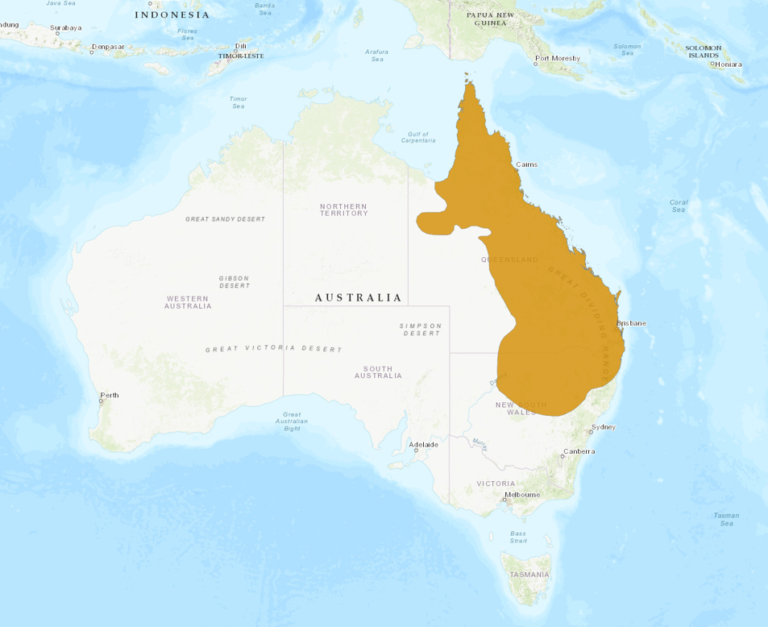
© BirdLife International 2016
Inhabits open woodlands and other mixed habitats, including agricultural and settled areas.
Widely distributed in Queensland and northern New South Wales from Cape York south in the interior to Gundabooka and Warrumbungle National Parks and along the coast to Port Macquarie.
An introduced population existed on Maui, Hawaii, from around 1877 into the mid-1900s. It was reportedly numerous from the 1890s until at least the 1920s. The cause and timing of its disappearance are unknown.
Identification
A mostly blue-and-yellow parakeet, but highly variable in the balance, distribution, and intensity of those colors. Northern populations tend to be more extensively yellow.
True to its name, the head is predominantly whitish or yellow. The upperparts are otherwise mostly scaly with large black feather-centers fringed with yellow or aqua-blue. The rump is usually bluish in southern population and yellow in the north.
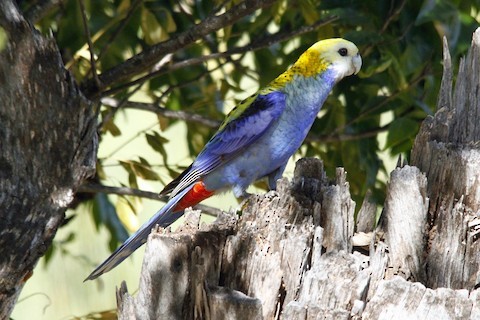
Pale-headed Rosella with extensively blue underparts. (Bowen, Queensland, Australia; July 6, 2011.) © Alan Atkinson
The underparts are mostly bluish with red undertail coverts. However, the throat and chest can be either yellow or blue. Northern birds typically have a yellow chest and contrasting blue throat. Southern birds tend to be yellow above and blue below, but the location of the transition varies.
The intensity and tones of colors throughout the plumage also vary widely.
The wings and tail are mostly blue.

Pale-headed Rosella with mostly yellow head and turquoise underparts. (Shelley Road Park, Kholo, Queensland, Australia; November 7, 2019.) © Stephen Murray
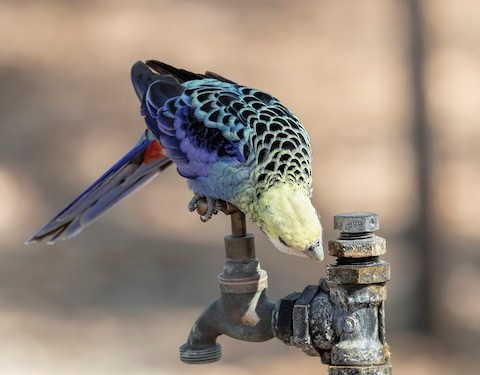
Pale-headed Rosella showing scaled pattern on upperparts, with transition from yellow to turquoise. (Mount Carbine, Queensland, Australia; November 10, 2019.) © Jill Duncan & Ken Bissett

Pale-headed Rosella with extensively blue underparts. (Oak Valley, Townsville, Queensland, Australia; July 6, 2017.) © Tony Ashton

Pale-headed Rosella. (Georgetown, Etheridge, Queensland, Australia; October 25, 2016.) © Gil Ewing
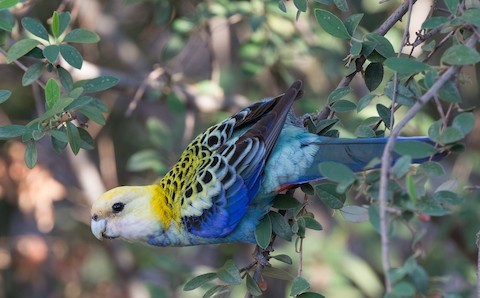
Pale-headed Rosella. (Pelicans Rest Caravan Park, St. George, Queensland, Australia; April 15, 2019.) © Geoff Dennis

Pale-headed Rosella with contrasting blue throat typical of northern populations and bluish rump typical of southern populations. (Mount Carbine, Queensland, Australia; January 11, 2020.) © Matthew Kwan
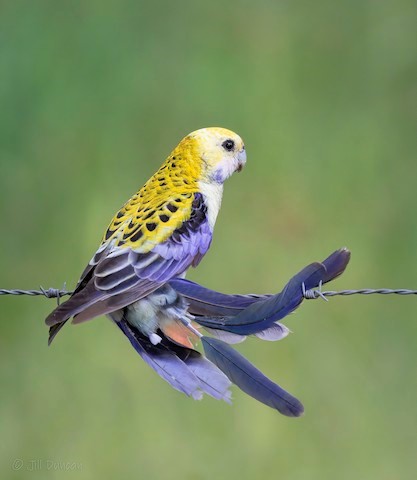
Pale-headed Rosella with extensively vivid yellow upperparts. (Priors Pocket, Moggill, Queensland, Australia; April 4, 2020.) © Jill Duncan & Ken Bissett
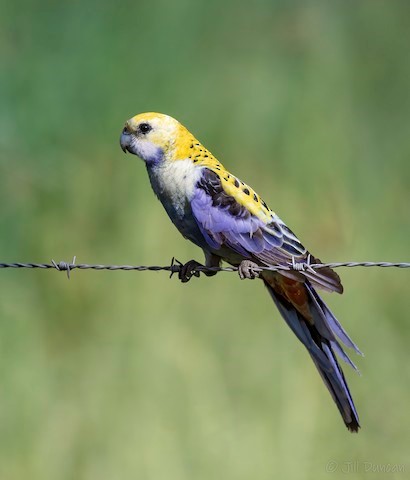
Pale-headed Rosella with unusually patchy coloration and thin blue throat patch. (Priors Pocket, Moggill, Queensland, Australia; April 4, 2020.) © Jill Duncan & Ken Bissett

Pale-headed Rosella with mostly blue coloration overall. (Platypus Park, Atherton, Queensland, Australia; November 21, 2017.) © Arco Huang
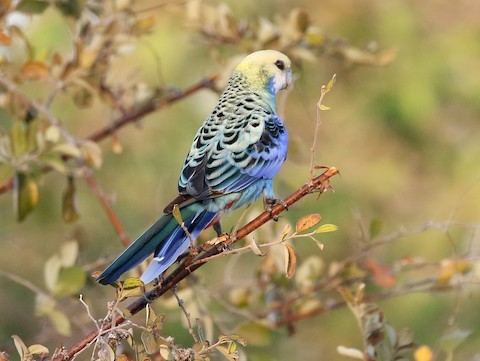
Pale-headed Rosella, showing scaled pattern on upperparts. (Durham Dam, Georgetown, Queensland, Australia; October 26, 2016.) © Charlotte Byers
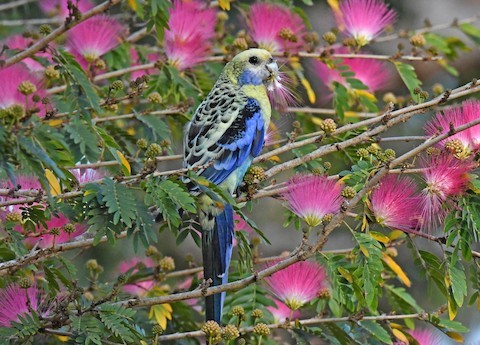
Pale-headed Rosella with contrasting blue throat and yellow chest and rump—all typical of northern populations. (Mount Carbine, Queensland, Australia; October 6, 2019.) © Michael Hatton
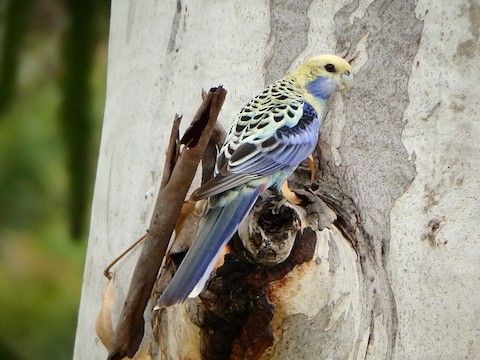
Pale-headed Rosella with contrasting blue throat and yellowish chest and rump—all typical of northern populations. (Innot Hot Springs, Queensland, Australia; April 9, 2016.) © Adrian Walsh

Pale-headed Rosella with limited black markings. (Banks Street Reserve, Brisbane, Queensland, Australia; October 11, 2018.) © Frank Coman
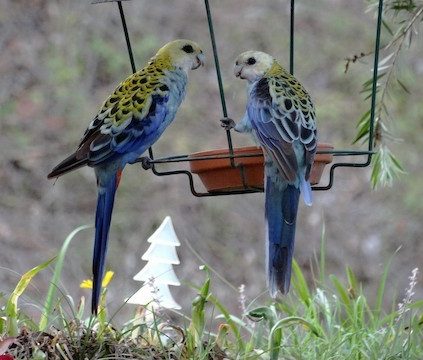
Pale-headed Rosellas with mostly white heads. (Cashmere, Queensland, Australia; December 30, 2014.) © Sue Lee

Pale-headed Rosella with mostly yellow head and whitish throat. (Lillybrook Camping Area, Coulson, Queensland, Australia; July 26, 2016.) © Sandra Gallienne
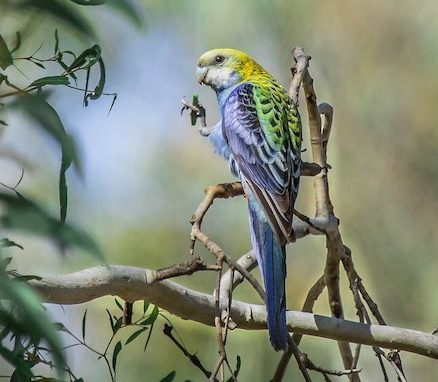
Pale-headed Rosella with extensive green in its multi-hued upperparts. (Charters Towers, Queensland, Australia; August 5, 2017.) © Lindsay Hansch
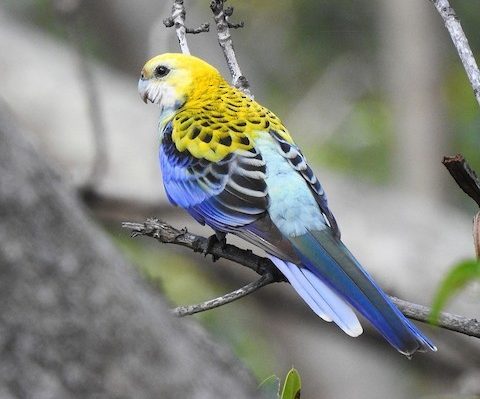
Pale-headed Rosella, showing pale-blue rump and vivid yellow cape and mantle. (Wynnum Wetlands, Brisbane, Queensland, Australia; August 14, 2019.) © Rob Nicholson
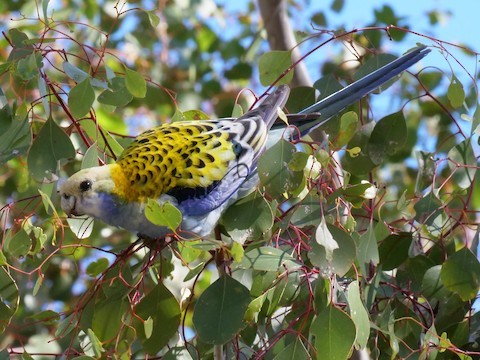
Pale-headed Rosella with mostly vivid yellow upperparts. (Lake Broadwater Conservation Park, Nandi, Queensland, Australia; June 9, 2019.) © Frank Coman
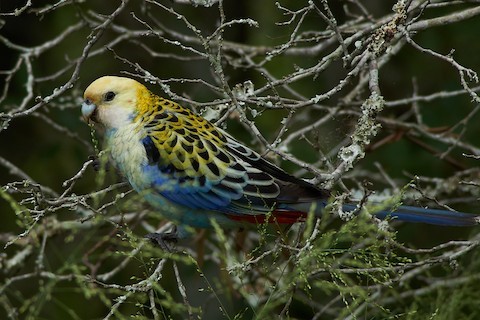
Pale-headed Rosella with heavy black markings. (Prince Henry Heights Park, Toowoomba, Queensland, Australia; February 22, 2020.) © Sara Young
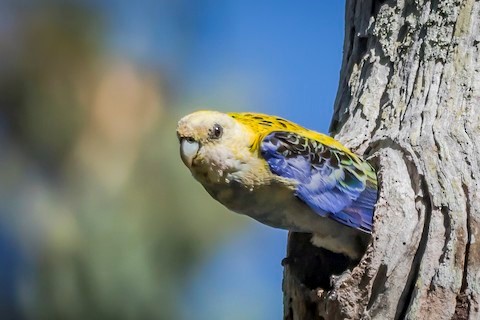
Pale-headed Rosella emerging from nest cavity. (Tarcoola Track, Brisbane, Queensland, Australia; January 20, 2018.) © Bob Durant

Pale-headed Rosella, showing vivid red undertail coverts. (Georgetown, Queensland, Australia; October 21, 2011.) © Greg Griffith

Pale-headed Rosella, showing vivid red undertail coverts. (Herberton, Queensland, Australia; January 5, 2020.) © J.J. Harrison
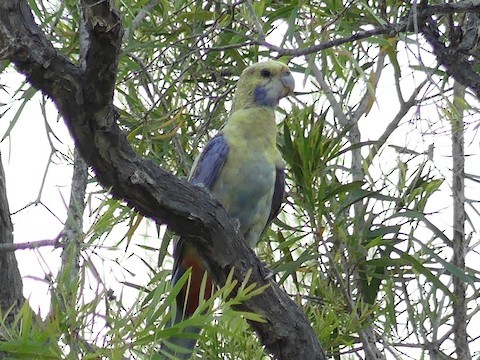
Pale-headed Rosella, immature—note reddish spot on forehead and overall weak coloration. (Artemis Station, Queensland, Australia; October 15, 2016.) © Peter Kaestner
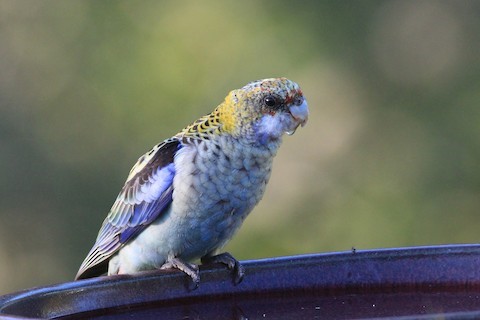
Pale-headed Rosella, juvenile. (Pullenvale, Brisbane, Queensland, Australia; March 15, 2018.) © Barbara & Brian O’Connor
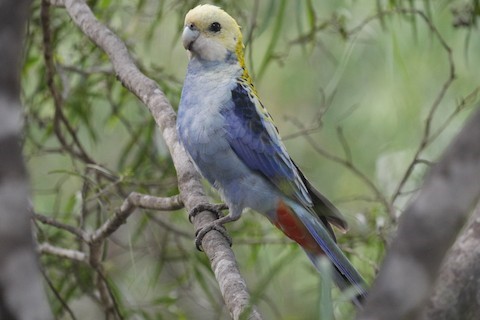
Pale-headed Rosella with washed-out coloration. (Lake Broadwater Conservation Park, Nandi, Queensland, Australia; July 16, 2017.) © Frank Coman
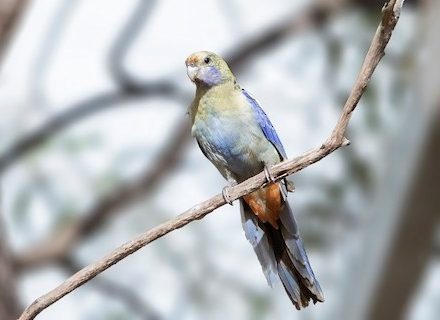
Pale-headed Rosella, immature—note reddish forehead and overall weak coloration. (Mount Carbine, Queensland, Australia; September 13, 2019.) © Bradley Hacker
Notes
Polytypic species consisting of two recognized subspecies.
References
BirdLife International. 2016. Platycercus adscitus. The IUCN Red List of Threatened Species 2016: e.T22685122A93059347. https://dx.doi.org/10.2305/IUCN.UK.2016-3.RLTS.T22685122A93059347.en. (Accessed July 1, 2020.)
eBird. 2020. eBird: An online database of bird distribution and abundance. Cornell Lab of Ornithology, Ithaca, N.Y. http://www.ebird.org. (Accessed July 1, 2020.)
Forshaw, J.M. 2010. Parrots of the World. Princeton University Press.
Juniper, T., and M. Parr. 1998. Parrots: A Guide to Parrots of the World. Yale University Press.
Pyle, R.L., and P. Pyle. 2017. The Birds of the Hawaiian Islands: Occurrence, History, Distribution, and Status. Version 2 (January 1, 2017). http://hbs.bishopmuseum.org/birds/rlp-monograph/. B.P. Bishop Museum, Honolulu, Hawaii.
Xeno-Canto. 2020. Pale-headed Rosella – Platycercus adscitus. https://www.xeno-canto.org/species/Platycercus-adscitus. (Accessed July 1, 2020.)
